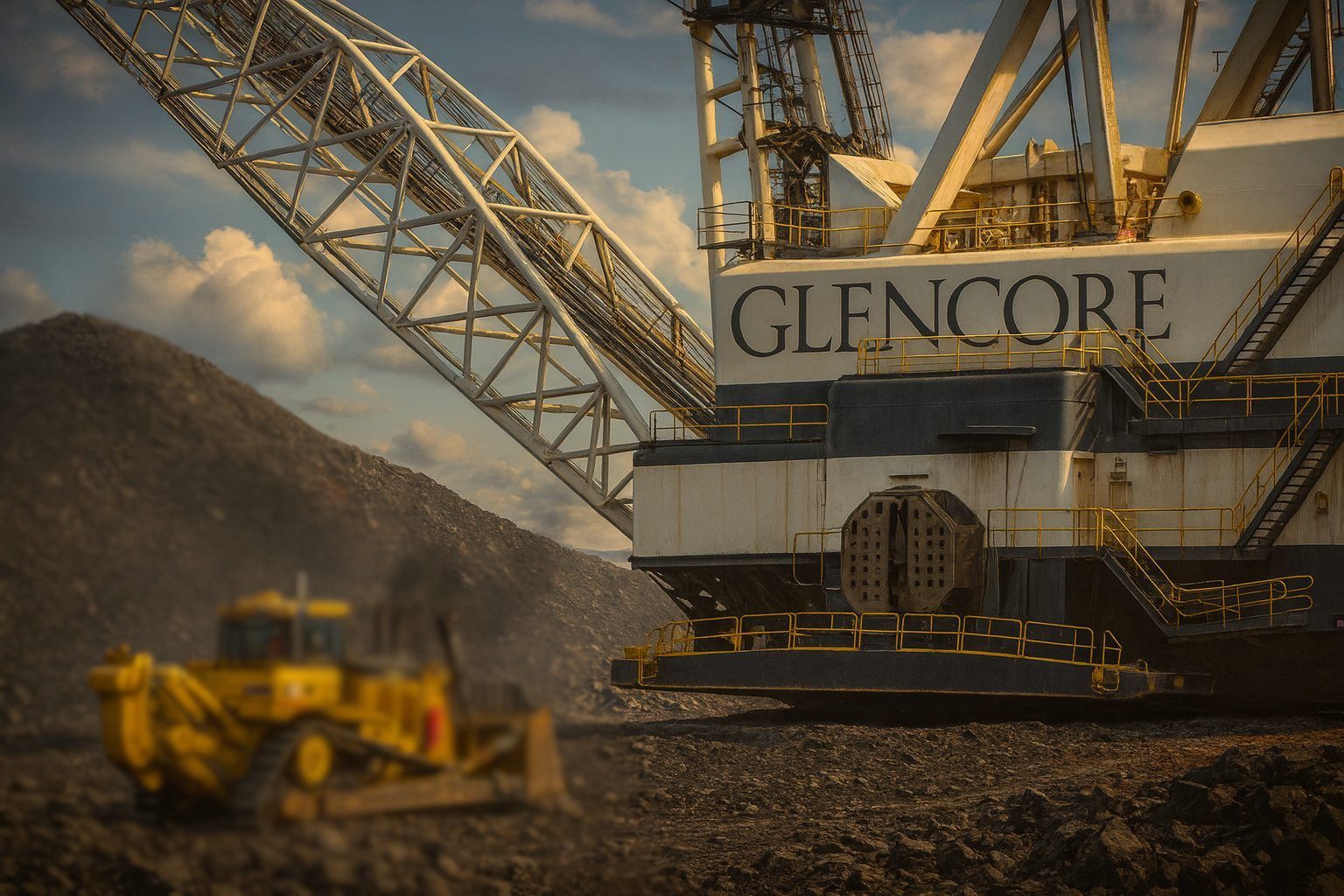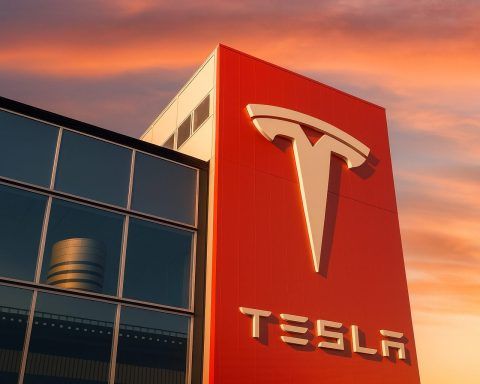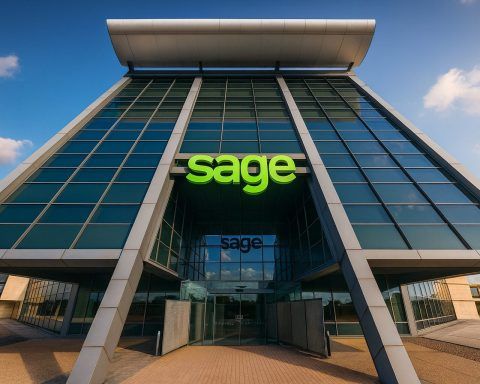Glencore plc (LON:GLEN) ended Thursday’s session slightly lower, with investors weighing ongoing headlines around copper smelter bailouts, potential asset closures in Canada, and fresh environmental rehabilitation milestones at its Australian coal mines.
- GLEN share price closed at 348.40p, down 0.47% on the day, leaving the stock about 4–5% below mid‑November levels but well above its 52‑week low of 205p. [1]
- Copper processing remains in focus after a A$600m (US$395m) government bailout for Glencore’s Mount Isa smelter and Townsville refinery, and industry concern over record‑low copper treatment charges. [2]
- ESG optics improved locally as Queensland certified 725 hectares of rehabilitated land at Glencore’s Rolleston and Newlands coal sites, bringing certified rehab at Rolleston alone to over 1,100 hectares, roughly a quarter of the mine footprint. [3]
- Community and legal pressure persists, with Australian farm groups highlighting a previous court victory over Glencore in a carbon‑storage case as they mobilise against Santos’ Narrabri gas project. [4]
- Strategic pivot to the energy transition continues through the takeover of Li‑Cycle’s global battery‑recycling assets and a cornerstone investment in Chinese aluminium producer Chuangxin Industries, deepening Glencore’s exposure to EV and grid‑metal demand. [5]
Glencore Share Price Today: Modest Drift Lower After a Volatile Month
Glencore shares finished Thursday, 27 November 2025, at 348.40p on the London Stock Exchange, down from 350.05p on Wednesday. The stock traded between 346.89p and 349.70p during the session, with volume just under 3 million shares. [6]
Over the past couple of weeks, GLEN has:
- Fallen from about 365.8p on 14 November – a drop of roughly 4.8%,
- But recovered from a near‑term low of 335p on 21 November, helped by a mini‑rally tied to stronger copper and coal sentiment. [7]
On a longer view, Glencore is trading in the middle of its 52‑week range of 205p–397.40p, leaving room on both the upside and downside depending on how its copper and coal story evolves. [8]
Market‑wide, resource stocks were a mild drag on the FTSE 100 on Thursday, with Trading Economics/TradingView noting that miners and energy names such as Rio Tinto, Anglo American, BP, Shell – and Glencore – were all slightly lower on the day. [9]
At the corporate level, Glencore’s own site showed the LSE line at 349.00p at 08:50 GMT, down 1.05p intraday, and the Johannesburg listing at ZAR 79.25, modestly higher in local terms. [10]
Smelter Bailout Fallout: Mount Isa Stays Open, But Questions Multiply
A major part of the Glencore investment story in late 2025 remains the A$600 million rescue package for its Australian copper processing assets.
In early October, the Australian federal government and Queensland jointly announced a A$600m support package over three years to keep the Mount Isa copper smelter and Townsville refinery running, citing the need to protect critical‑minerals processing capacity and around 600+ regional jobs. [11]
Key points from that deal and subsequent coverage:
- The funding is split between Canberra and Brisbane and is intended to secure operations through to around 2028, giving time for market conditions and new mine supply to improve. [12]
- Reports in Australian media suggest Glencore still expects the complex to lose money over the life of the deal – one article put projected cumulative losses at around A$2.2bn over seven years, even with government support. [13]
- Analysts and commentators, including The Guardian, have framed the bailout as part of a broader shift in Australian industry policy, following rescues of steel and aluminium assets earlier this year. [14]
Fresh commentary in the copper market this week underscores why policymakers stepped in. At a Shanghai industry conference, a senior Chinese metals official warned that zero or negative treatment and refining charges (TC/RCs) – fees paid to smelters for turning concentrate into metal – are “unsustainable”, noting that spot terms have reportedly gone as low as –US$60 per tonne this year amid tight concentrate supply and heavy Chinese smelting capacity. [15]
The same report pointed to Glencore’s Mount Isa operations as one example of how depressed smelter economics have forced governments to intervene, alongside output cuts at Japanese rival JX Advanced Metals. [16]
Yet despite the lifeline, local and specialist outlets continue to ask whether the bailout will be enough. Coverage from ABC News and regional media has highlighted:
- The interdependence between Mount Isa and the Phosphate Hill fertiliser plant, which uses the smelter’s sulphuric acid by‑product. [17]
- The risk that if that fertiliser operation closes in 2026, the smelter could follow, potentially cutting short the intended life of the rescue package. [18]
For investors, this mix of government support and ongoing operational uncertainty keeps the Australian copper business firmly on the risk radar.
New Coal Rehabilitation Milestones in Queensland
Against this backdrop, Glencore is also pushing to demonstrate environmental progress at its coal assets.
On 27 November, Industry Queensland reported that the Queensland Government has certified 725 hectares of rehabilitated mined land across Glencore’s Rolleston and Newlands coal operations. [19]
The article notes that:
- At Rolleston, 323.5 hectares of land have just been signed off as successfully rehabilitated.
- In total, more than 1,100 hectares at Rolleston are now government‑certified – equivalent to about a quarter of the mine’s total footprint. [20]
For a company often under pressure over its coal portfolio, this kind of third‑party certification provides concrete ESG talking points, especially as regulators tighten expectations around mine closure and post‑mining land use.
The timing is notable: the rehab milestone sits alongside fierce debate in Australia over new federal environmental law reforms, which industry groups argue could add further red tape to future projects. [21]
Community & Legal Pressure: Old Battles Still Shape Glencore’s Reputation
On the same day, rural news outlet Moree Online News highlighted how Glencore’s legal track record continues to resonate in Australian politics.
In an article on the controversial Narrabri Gas Project, NSW Farmers’ acting CEO Mike Guerin said he was “getting the band back together” – a reference to the legal team that previously defeated the federal government and Glencore in a Federal Court case over a proposed carbon‑storage project in the Great Artesian Basin. [22]
That earlier case centred on farmer concerns that injecting CO₂ underground could contaminate vital groundwater with arsenic and lead; an independent hydrologist’s report played a key role in the judgment. [23]
While the new fight is aimed at Santos rather than Glencore, the narrative reinforces two points that matter to GLEN shareholders:
- Organised and experienced local opposition can mobilise quickly using prior wins against major miners as a template.
- Glencore’s historical environmental disputes can resurface in adjacent debates, affecting its social licence even where it is not the primary project proponent.
Copper Market Pressures and the Horne Smelter Question
Beyond Australia, Glencore faces similar smelter‑margin pressures in Canada.
A Reuters exclusive in early November reported that the company is planning to close its Horne copper smelter and the associated Canadian Copper Refinery (CCR) in Quebec due to the high cost of environmental upgrades and persistent financial strain. The report cited sources suggesting more than US$200m of investment might be required to modernise the operations. [24]
Key points from that story:
- The Horne smelter and CCR together employ over 1,000 workers and are important suppliers of refined copper to the U.S. market. [25]
- Glencore is facing a class‑action lawsuit in Quebec over arsenic emissions, with damages potentially claimable back to 2020. [26]
- A company spokesperson has publicly said Glencore is not currently considering closure and continues to work on emission‑reduction plans and with stakeholders, but acknowledges “enormous pressures” on smelters worldwide. [27]
These Canadian headlines dovetail with the broader copper‑market dynamic captured in Glencore’s Third Quarter 2025 production update. The company reported:
- A 17% year‑on‑year drop in own‑sourced copper production to 583,500 tonnes for the first nine months of 2025, mainly due to lower ore grades at some mines.
- Narrowed full‑year copper production guidance to 850,000–875,000 tonnes, trimming the upper end of its previous 890,000‑tonne range. [28]
Despite operational issues, Glencore reaffirmed expectations for its Marketing division to deliver full‑year EBIT around the midpoint of its $2.3–3.5bn guidance band, underlining the importance of trading earnings in smoothing out cyclical swings in its industrial business. [29]
Energy‑Transition Strategy: Li‑Cycle and “Green” Aluminium Bets
While legacy coal and smelter assets dominate some of the headlines, Glencore is also quietly re‑positioning its portfolio toward energy‑transition supply chains.
Li‑Cycle battery‑recycling acquisition
In August 2025, Glencore Canada completed the acquisition of substantially all Li‑Cycle Holdings’ assets out of bankruptcy and Canadian creditor protection. [30]
The deal brings under Glencore’s umbrella:
- Li‑Cycle’s battery‑recycling “spokes” in the United States and Germany,
- The flagship Rochester Hub project in New York, designed to process black mass into lithium and other metals,
- And a portfolio of battery‑recycling intellectual property. [31]
Glencore’s own site now redirects Li‑Cycle‑related queries to Glencore Battery Recycling (GBR), noting that as of 8 August 2025, Li‑Cycle has been fully folded into the group. [32]
Analysts see the move as a strategic bet that closed‑loop EV battery recycling will become a critical piece of future copper, nickel, cobalt and lithium supply – areas where Glencore already has decades of marketing expertise. [33]
Chuangxin aluminium IPO in Hong Kong
On the equity side, Glencore has also been flagged as a cornerstone investor in the Hong Kong listing of Chuangxin Industries Holdings, a vertically integrated Chinese aluminium producer focused on lower‑carbon operations. TechStock²
Mining and market reports indicate:
- Chuangxin raised around HK$5.5bn at IPO, with cornerstone investors (including Glencore, Hillhouse, China Hongqiao and Mercuria) taking close to half the deal. TechStock²
- The shares closed their first trading day up more than 30%, reflecting strong investor appetite for assets tied to electrification and renewable‑energy infrastructure. TechStock²
For Glencore, these moves build optionality in battery metals and “green” aluminium, while its coal operations slowly wind down over the next decade.
Fundamentals and Valuation: Cost of Capital vs Returns
From a fundamentals viewpoint, several data points stand out as of 27 November 2025:
- Independent data provider GuruFocus estimates Glencore’s weighted average cost of capital (WACC) at 7.09%, compared with a trailing return on invested capital (ROIC) of 3.83%. On that basis, recent investments are not yet earning returns above the blended cost of debt and equity. [34]
- Glencore’s market capitalisation sits around £41bn on the LSE, equivalent to roughly US$54–55bn based on various market‑data providers. [35]
- Revenue over the last twelve months is in the US$170–230bn range (depending on whether you look at LSE or OTC trackers and which reporting window you use), underlining the enormous scale of Glencore’s trading activities. [36]
On the corporate‑actions side, Glencore has an active 2025/2026 share buy‑back programme in place, and continues to emphasise shareholder returns through distributions and buybacks, subject to maintaining its target net‑debt range. [37]
However, with ROIC currently below WACC, the quality and timing of capital allocation decisions – including smelter bailouts, industrial expansions and M&A like Li‑Cycle – will likely be central to how the valuation story evolves.
What Today’s Developments Mean for Glencore Shareholders
Bringing it all together, 27 November 2025 offers a snapshot of a company juggling three overlapping storylines:
- Short‑term market drift
- GLEN’s slight pullback today tracks broader softness in UK resource stocks and follows a solid rebound from last week’s lows. Price action alone looks like consolidation after a volatile month rather than a decisive new trend. [38]
- Structural pressure vs strategic opportunity in copper
- The A$600m Mount Isa package and questions around the Horne smelter show how fragile global copper smelting economics have become, even for a giant like Glencore. [39]
- At the same time, the company is leaning into long‑term demand through Li‑Cycle, Chinese aluminium and its large base‑metal portfolio – all central to electrification and decarbonisation.
- ESG push‑and‑pull
For current and prospective investors, the key questions after today’s news are likely to be:
- Can Glencore navigate smelter economics and regulatory risk without eroding shareholder value?
- Will its moves in battery recycling and low‑carbon aluminium translate into returns that lift ROIC above its roughly 7% cost of capital? [42]
- And how quickly can the group shrink its thermal‑coal exposure while maintaining the cash flows that underpin buybacks and dividends?
Those answers will unfold over years, not days – but the mix of modest share‑price weakness, fresh ESG milestones and continuing scrutiny of state support makes 27 November 2025 a useful checkpoint in Glencore’s transition story.
Disclaimer: This article is for information and news purposes only and does not constitute financial advice or a recommendation to buy or sell any security. Always do your own research or consult a licensed financial adviser before making investment decisions.
References
1. www.investing.com, 2. www.reuters.com, 3. industryqld.com.au, 4. moreeonlinenews.com.au, 5. www.glencore.com, 6. www.investing.com, 7. www.investing.com, 8. www.investing.com, 9. www.tradingview.com, 10. www.glencore.com, 11. www.reuters.com, 12. www.reuters.com, 13. www.theaustralian.com.au, 14. www.theguardian.com, 15. theedgemalaysia.com, 16. theedgemalaysia.com, 17. www.abc.net.au, 18. www.abc.net.au, 19. industryqld.com.au, 20. industryqld.com.au, 21. industryqld.com.au, 22. moreeonlinenews.com.au, 23. moreeonlinenews.com.au, 24. www.reuters.com, 25. www.reuters.com, 26. www.reuters.com, 27. www.reuters.com, 28. www.reuters.com, 29. www.reuters.com, 30. www.wastedive.com, 31. www.wastedive.com, 32. www.glencore.com, 33. www.usa.ev-battery-recycling.com, 34. www.gurufocus.com, 35. www.londonstockexchange.com, 36. stockanalysis.com, 37. www.glencore.com, 38. www.tradingview.com, 39. www.reuters.com, 40. industryqld.com.au, 41. moreeonlinenews.com.au, 42. www.gurufocus.com










